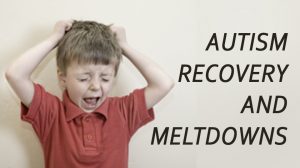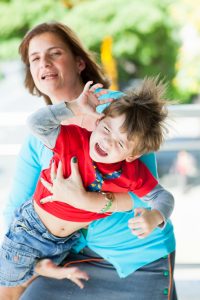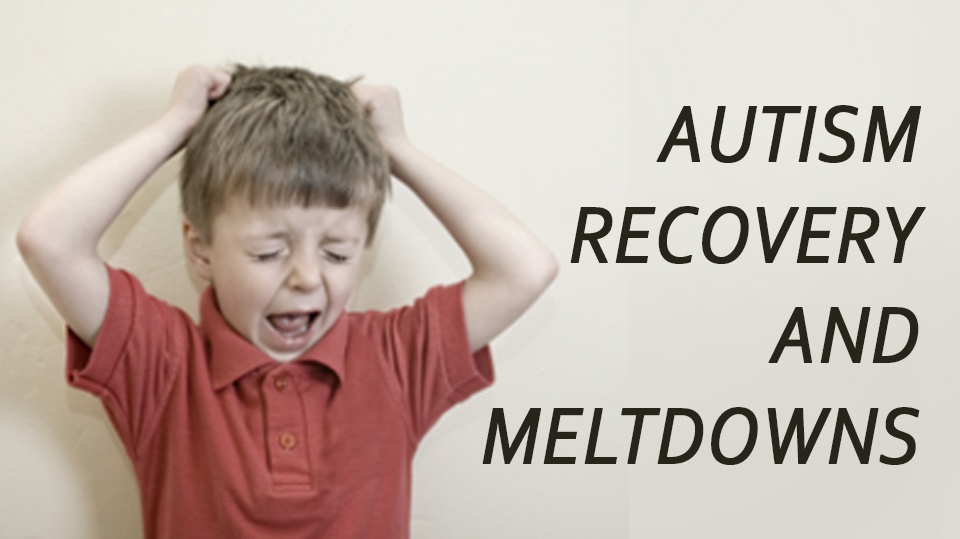 Meltdowns are a developmental remnant for autism. Therefore, it is typical for the years prior to beginning our autism recovery program to be fraught with them. In order to be your child’s best advocate, it is important to be able to distinguish between meltdowns and tantrums. Let’s take a closer look at these two.
Meltdowns are a developmental remnant for autism. Therefore, it is typical for the years prior to beginning our autism recovery program to be fraught with them. In order to be your child’s best advocate, it is important to be able to distinguish between meltdowns and tantrums. Let’s take a closer look at these two.
MELTDOWNS & TANTRUMS
To best understand meltdown and tantrums, we look at what many call the “terrible twos.” Yes, the “terrible twos” are marked by defiance and stubbornness that yield meltdowns and tantrums. Initially, the baby/toddler is unable to control its emotions. Therefore, emotional outburst are typical when they are determined to have what they want. These outburst are actually meltdowns as they cannot be controlled. Therefore, we don’t tell the baby or 14-month-old toddler to just stop crying because we know they can’t. Instead, we focus on keeping the toddler safe during meltdowns. For example, we cover sharp edges on tables so the toddler won’t run into them and hurt himself. We don’t expect anything different because we know they are not yet capable.

At some point, we realize that the toddler has become capable of controlling his outbursts. The toddler may continue to have outburst because he has learned that the outbursts gets him what he desires. At this point, the outbursts are no longer meltdowns. These outbursts have become tantrums. It is important not to yield to tantrums since the child is capable of controlling his emotions. At this point, continuing to yield to tantrums will spoil the child and retard his development.
SUMMARY:
| Identifying Quality | Goal | |
| Meltdown | Uncontrolled Outbursts | Safety |
| Tantrum | Controlled Outbursts | Cessation |
AUTISTIC MELTDOWNS
Since defiance, stubbornness and meltdowns are typically developmental remnants for autistic individuals, the years spent with many autistic individuals prior to beginning our autism recovery program are fraught with them. Since many autistic children begin to regress at age 2, they tend to still be at the stage of 2-year-old development when their brains begin to recover. As your child’s brain begins to develop again, it will pick up where it left off. Hence, many parents will notice that their child is more defiant and stubborn for a few weeks shortly after he starts Optimum Health’s autism recovery program. Fortunately, the parents usually notice that this developmental remnant quickly dissipates into tantrums that can be controlled and stopped.
As the pictures below illustrate, this stage looks really different for older autistic individuals. It takes a little imagination to recognize that your older autistic individual is still in the “terrible twos” phase. You have to learn to see the two-year-old in your autistic child no matter what his age. When you read the book, What to Expect: The Toddler Years by Eisenberg, Murkoff and Hathaway (ISBN 0-89480-994-6 ) that is referenced throughout this document, it may be helpful to substitute the word “toddler” with the word “child” or “individual”.
 |
 |
Keep in mind that your child’s brain may not have improved enough yet for him to be able to handle this stage as well as an actual two-year-old could. You may find that many of the suggestions made for a toddler won’t work initially for your child. At times, all you can do is nurture yourself while you love your child through it simply keeping them safe as you have been doing. Hug your child and let him have his way as much as you can if this developmental remnants hasn’t dissipated yet. Having a good support system is critical at this time. This is also a good time for you to be on a good multivitamin and B complex to help you deal with the stress. Valerian root can help you and your child handle the stress as well. Fortunately, most of the “terrible twos” meltdown developmental remnant with the autistic children in our program dissipate in about a month or two. Since the increasing severity of the “terrible twos” phase is actually an indication that your child’s brain is healing and improving, it is a time for celebration! Be happy about that. Then, get ready for the rough ride through it.
Tantrums and meltdowns are often the result of overstimulation and/or understimulation. Therefore, learning how to deal with these two is a critical part of making it through the rough ride of the terrible two’s remnants.
OVERSTIMULATION
For overstimulation, it is advised to provide a dark, quiet space. This could be achieved with a tent, a light-blocking blanket or by installing light-blocking curtains or blinds. If a child on the autism spectrum has a place to go when she is feeling overwhelmed by sensory stimuli, she is much less likely to act out in frustration.
UNDERSTIMULATION
For understimulation, a sensory exploration area or box of sensory toys might be used. Sand, water, gravel, squishy toys, hug pillows, stretch bands, putty, rattles, action song tapes or videos, swings and trampolines are all popular options. For anxious or hyperactive children, a weighted vest might be an option. It delivers deep pressure touch stimulation, which might help them feel calmer and more focused. Ear defenders and sunglasses can help, too.
CESSATION OF TANTRUMS
As your child’s brain heals, the meltdowns will get milder becoming tantrums. Though your child is able to control herself, she may now realize that mimicking the behavior of a meltdown will get her what she wants. For example, a 12 year old boy had literally been throwing himself on the floor in numerous meltdowns. He had bruises that proved that he simply could not control himself. About two months after he started our autism recovery program, the meltdowns became tantrums. He continued the behavior because his parents responded to it by letting him have his way. His father finally realized that these episodes were only tantrums when his son went to throw himself on the floor and had a look that said, “This is going to hurt.” Then, this son laid on the floor and began kicking and screaming. At this point, just as with an actual two-year old, the father’s goal became cessation. It was the last tantrum this child attempted to have. The father simply let his son know that this behavior was no longer acceptable. Sometimes a parent may try bargaining with the child. In nearly all cases, our parents have found that, once the child realized they were no manipulated by this type of behavior nor willing to tolerate it, the tantrums ceased.
 Next:
Next:
 Eating Tips For Children With Autism
Eating Tips For Children With Autism
Success With Sleep Issues Associated With Autism
Theory Of Mind: A Key To Understanding The Thinking Of Autistic Children
